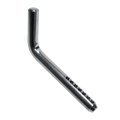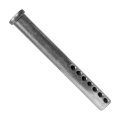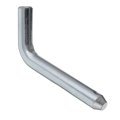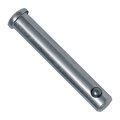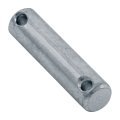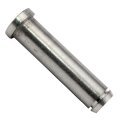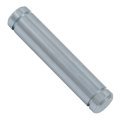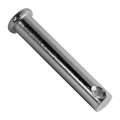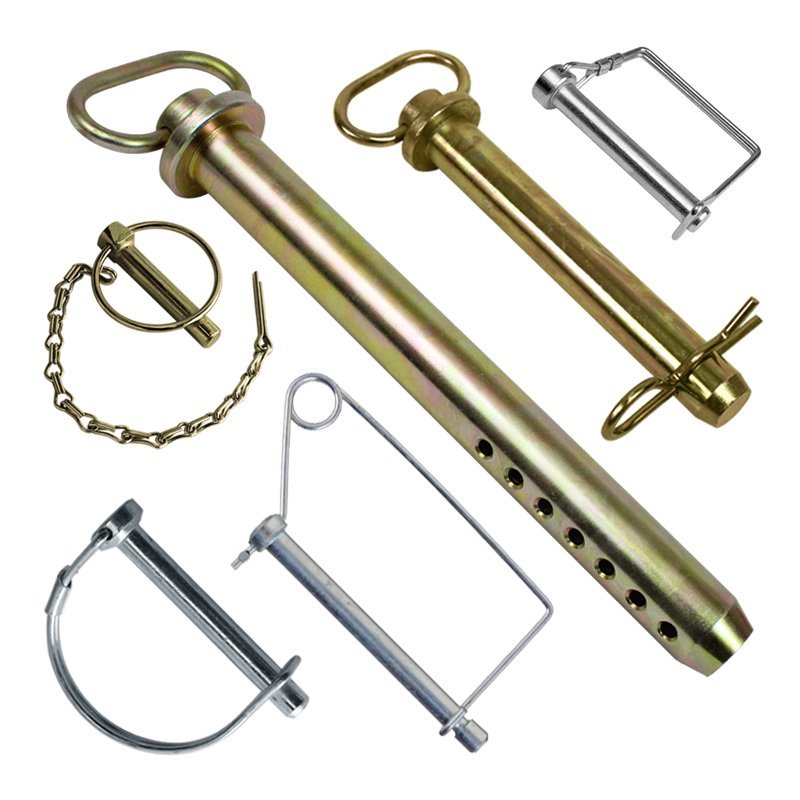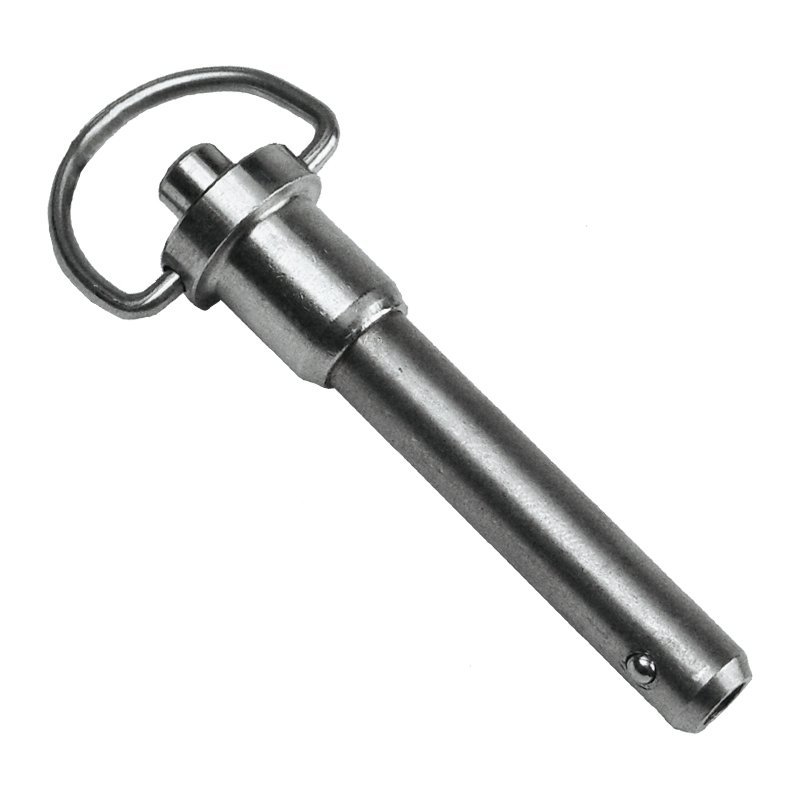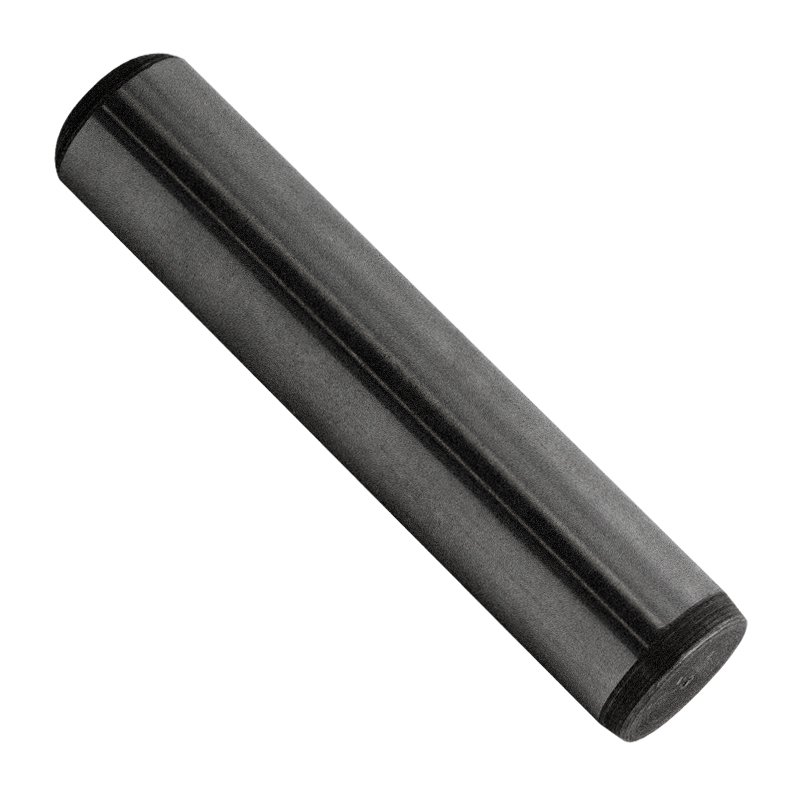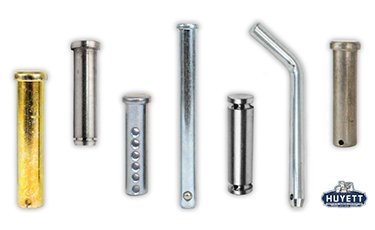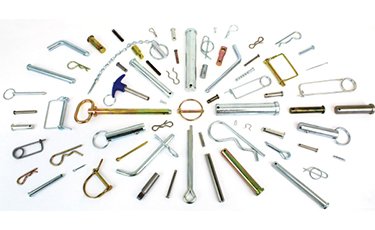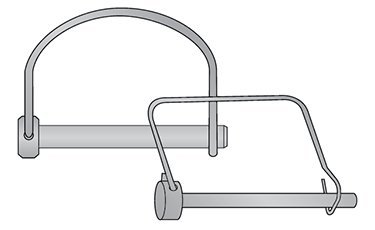Clevis Pins
Clevis Pins
A clevis pin, a reusable, non-threaded cylindrical
type of industrial pin with holes in the shank end, secures components between its head and end. These pins are perfect for quickly connecting or disconnecting equipment in both temporary and permanent applications, especially when precise alignment is not necessary. In many cases, they are used in a three-point fastening system that connects trailer hitches or agricultural attachments to larger equipment. They feature a variety of head and end styles - including chamfers, grooves, angles, etc. - that are available in different combinations, making them versatile for many different uses.
Application Considerations
There are several key factors to consider before choosing the right clevis pin for your application:
- Spacing: The application may require you to work around tight and awkward spaces or blind sides, so it's important to select the right pin head and shank to accommodate those requirements.
- Mating Connection Compatibility: While these pins are not meant for precise alignment, it is important that they facilitate a secure connection. Evaluate the size of the mating hole to see if your pin performs at optimal capacity. Also, think about the style of the mating component. Is it a hook? A hitch? a yoke end? This will impact your choice of pin.
- Access: Will your application require constant installation/removal or general access to the connection point? If so, you may want to consider using bridge pins or cotter pins as mating fasteners.
- Environmental Factors: Since many clevis pin applications are outside on agricultural equipment, think about their exposure to the elements (rain, sun, heat/cold, dirt and debris, etc.) or even their exposure to chemical elements like sprays from crop fields. This will help you determine the best material/finish combination for your pin.
Benefits
Clevis pins are advantageous in a variety of ways, including:
- Easy Installation and Removal: Clevis pins are easy to install and remove, regardless of the type of head or shank styles in use.
- Versatile Application Usage: Their ability to position points, connect lifting hardware, and link various components with different connection styles makes these pins versatile and suitable for a wide range of applications.
- Cost-Effectiveness: Clevis pins are cost-effective fastening solutions, offering an economical and reusable option for agricultural and industrial use.
- Compatibility with Various Fasteners: Clevis pins pair well with various fasteners such as cotter pins, bridge pins, and safety pins, and more.
- Secure Load Holding: Clevis pins securely hold substantial load tension and pulling forces, ensuring a reliable connection between components.
Types of Clevis Pins
The type of pin is determined by the head and shank style, which feature similar shapes (for example, a pin could have a grooved head and a grooved shank). A head or shank could have chamfers, one or more holes, grooves, angles, or detent balls. Huyett offers the following types of clevis pins:
- Standard: Features a basic flat head with a single hole in the shank
- SAE: Similar to standard, but features chamfers at both ends
- Grooved: Features a flat head and a grooved shank with no holes
- Headless, Drilled and Grooved: Refers to a group of pins that either feature holes at both ends, grooves at both ends, or grooves with holes at both ends
- Adjustable (Universal): Features a flat end and a shank with multiple holes to adjust the pin length
- Cotterless Detent: Features a flat head with a spring-loaded detent ball as a self-locking feature
- Bent, Standard and Adjustable: Features an angled head and one or multiple holes in the shank
How to Measure a Clevis Pin
The most important and basic measurement on a clevis pin is its effective length, which is the distance between the head and the hole or groove in the shank (the usable length of the shank). However, each type of pin has its own unique requirements.
Our "How to Measure" video series features three videos that cover these different types of measurements. Watch them here:
Mating Clips and Fasteners
Clevis pins work by inserting a mating fastener at either the shank end or both ends (depending on the style) that keeps the pin locked in place. The best type of mating fastener depends on whether the pin features holes or grooves.
- If the pin features holes, compatible mating fasteners include cotter pins, bridge pins, and safety pins.
- If the pin features grooves, compatible mating fasteners include hair pins, bridge pins (they work for both types), e-clips, and poodle clips.
They are also inserted into other fasteners and hardware to keep entire fastening systems in place. These components include
clevis rod ends,
grab hooks, and other pieces of
lifting hardware.

